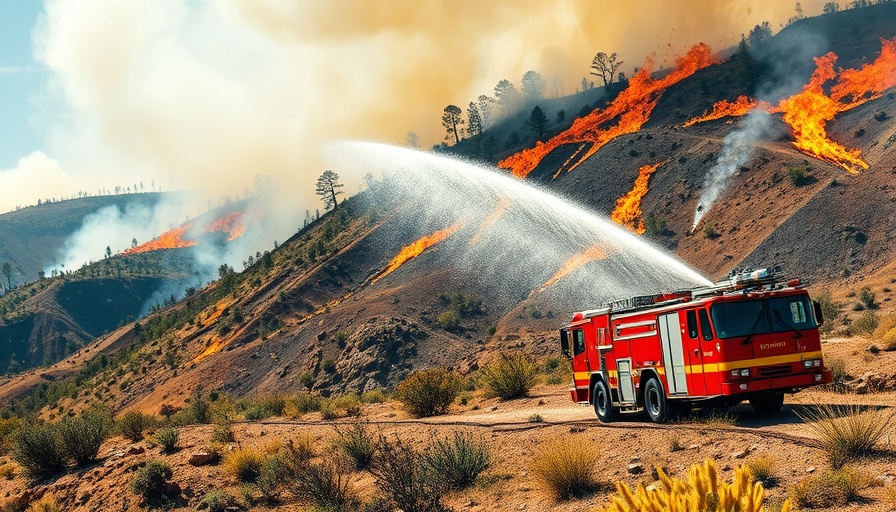
Californians Brace for Rising Insurance Rates Amid Climate Concerns
A staggering 87% of Californians are on edge regarding potential spikes in home insurance costs due to climate change, as revealed by a recent survey. This marks a significant leap from 47% last year, illustrating growing anxiety among homeowners about financial security amidst increasingly fierce wildfires.
The survey, conducted by the Public Policy Institute of California (PPIC), gathered responses from 1,736 state residents between July 1 and 7, gauging sentiments on a range of environmental issues. Among the noteworthy results, 60% of respondents expressed deep concern about rising home insurance prices, underscoring a troubling trend in the state already challenged by devastating wildfires.
The Connection Between Climate Change and Wildfires
California residents have repeatedly witnessed the severe consequences of climate change as wildfires ravage their communities. Insurance companies react to this increased risk by raising premiums or dropping coverage altogether, which was reported in various instances over the last decade. With major insurers like State Farm halting new policies, many property owners find themselves resorting to the California FAIR Plan, designated for homeowners who cannot obtain coverage elsewhere.
The alarming reality is that as environmental conditions worsen, the ability to secure insurance is becoming increasingly precarious. In fact, the survey indicates that 88% of participants fear that fellow Californians may struggle to find home insurance as wildfires continue to become more common, amplifying fears of not just physical loss, but also financial vulnerability.
Wider Concerns and Legislative Trends
While 80% of Californians view climate change as a significant threat to the state’s future, the issue is not solely confined to individuals' worries. Governor Gavin Newsom has been advancing various policies designed to combat climate change, such as a 2019 initiative aiming for net-zero emissions by 2045, alongside an executive order to phase out gasoline-powered vehicles by 2035.
However, these measures come at a time when federal funding for climate-related programs is being cut, exacerbating community concerns that the state might not be prepared for future climate challenges. This sentiment is palpable, with only 19% of residents expressing a strong confidence in the government's readiness to respond to extreme weather, ranging across political lines.
How Wildfires Affect Home Values and Insurance Rates
The interdependence between escalating wildfire threats and home insurance costs is complicated. Homeowners in high-risk areas are not only battling declining property values but must also contend with ever-increasing insurance premiums or the inability to find coverage at all. Such financial pressures can lead to wide-reaching consequences, including decreased market confidence in vulnerable areas.
In regions like the Bay Area, where homeowners face significant wildfire risks, 63% of surveyed residents view such threats as serious. Understanding the financial implications of climate-induced disasters is becoming essential for those investing in property or considering moving to high-risk regions.
Community Perspectives and Actionable Insights
Weaving a rich tapestry of emotions, residents’ fears about climate change—and its direct financial implications—reveal the community’s urgent need for dialogue about risk management and mitigation strategies. Local cities and towns can begin hosting workshops to educate residents about preventive measures they can take to protect their homes, as well as financial options for securing insurance coverage amidst growing uncertainties.
Moreover, homeowners can explore retrofitting their properties to make them more fire-resistant, potentially easing the burden of insurance costs. Creating a proactive community response, rather than waiting for government action, can empower individuals and families to feel more secure about their homes and the environment.
Conclusion: A Call for Awareness and Action
As California grapples with the dual pressures of climate change and a shifting insurance landscape, residents and leaders must remain vigilant. Understanding the financial repercussions of climate change is not just an academic exercise—it affects everyday lives. By becoming better informed about the driving forces behind insurance rates and advocating for effective policies that address climate risks, Californians can contribute to more stable communities and environments.
 Add Row
Add Row  Add
Add 




Write A Comment